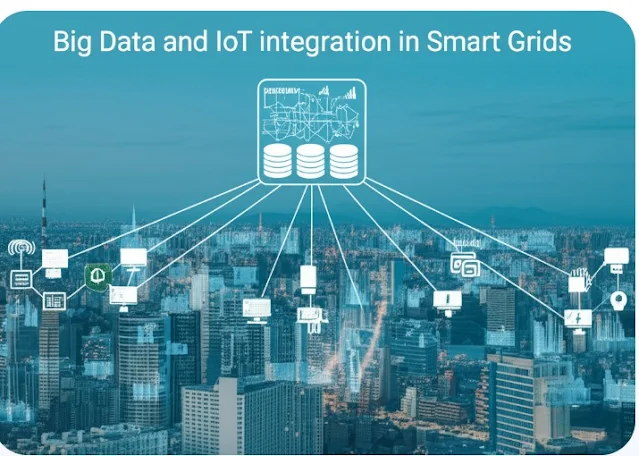The Role of Big Data in IoT for Smart Grids: Enhancing Efficiency
Introduction
How can the integration of Big Data and IoT transform the energy sector and create smarter grids? According to the International Energy Agency, global electricity demand is expected to increase by 60% by 2040. The need for efficient and reliable energy distribution is more critical than ever. Smart grids, powered by IoT and Big Data, offer innovative solutions to manage and optimize energy flow. This article explores the role of Big Data in IoT for smart grids, highlighting how these technologies enhance efficiency, reliability, and sustainability in energy management.
Section 1: Background and Context
The Concept of Smart Grids
Smart grids are modernized electrical grids that use IoT devices to monitor and manage energy flow in real-time. These grids integrate renewable energy sources, advanced metering infrastructure, and automated control systems to improve the efficiency and reliability of electricity distribution.
The Power of Big Data in Smart Grids
Big Data analytics processes the vast amounts of information collected by IoT devices in smart grids. By analyzing this data, utilities can optimize energy distribution, predict demand patterns, and identify potential issues before they escalate. Big Data provides actionable insights that enhance the overall performance and sustainability of smart grids.
Section 2: Key Points
Enhancing Energy Efficiency
IoT sensors in smart grids collect real-time data on energy consumption and distribution. Big Data analytics processes this information to identify inefficiencies and optimize energy flow. For example, smart meters can detect peak usage times and adjust energy distribution accordingly, reducing waste and improving efficiency.
Improving Grid Reliability
Big Data analytics can predict potential failures and maintenance needs by analyzing data from IoT sensors. This predictive capability allows utilities to address issues proactively, minimizing downtime and ensuring reliable energy supply. According to a study by the Electric Power Research Institute, predictive maintenance using Big Data can reduce grid outages by up to 50%.
Promoting Sustainability
Smart grids integrate renewable energy sources such as solar and wind power. Big Data analytics helps manage the variability of these sources by predicting energy generation patterns and optimizing storage solutions. This integration promotes sustainability by reducing reliance on fossil fuels and enhancing the use of clean energy.
Section 3: Practical Tips and Examples
Practical Tips for Implementing IoT and Big Data in Smart Grids
- Deploy IoT Devices: Install IoT sensors on key components of the grid to monitor energy flow and detect anomalies.
- Utilize Advanced Analytics Tools: Leverage Big Data analytics tools that can process real-time data and provide actionable insights.
- Ensure Data Security: Implement robust security measures to protect sensitive energy data from unauthorized access.
- Train Utility Personnel: Provide training to staff on using IoT and Big Data technologies effectively.
Example Case Study: Pacific Gas and Electric Company (PG&E)
PG&E employs IoT and Big Data to enhance the efficiency and reliability of its smart grid. IoT sensors monitor energy consumption and distribution in real-time, while Big Data analytics processes this information to optimize energy flow and predict maintenance needs. This approach has significantly reduced energy waste, improved grid reliability, and promoted the integration of renewable energy sources.
Conclusion
In conclusion, the integration of Big Data and IoT in smart grids offers transformative benefits for the energy sector, including enhanced efficiency, improved reliability, and promoted sustainability. By deploying IoT devices, utilizing advanced analytics tools, and ensuring data security, utilities can harness the power of these technologies to optimize energy management and create smarter grids. As global electricity demand continues to rise, embracing Big Data and IoT for smart grids will be crucial for achieving long-term success and sustainability.




Comments
Post a Comment